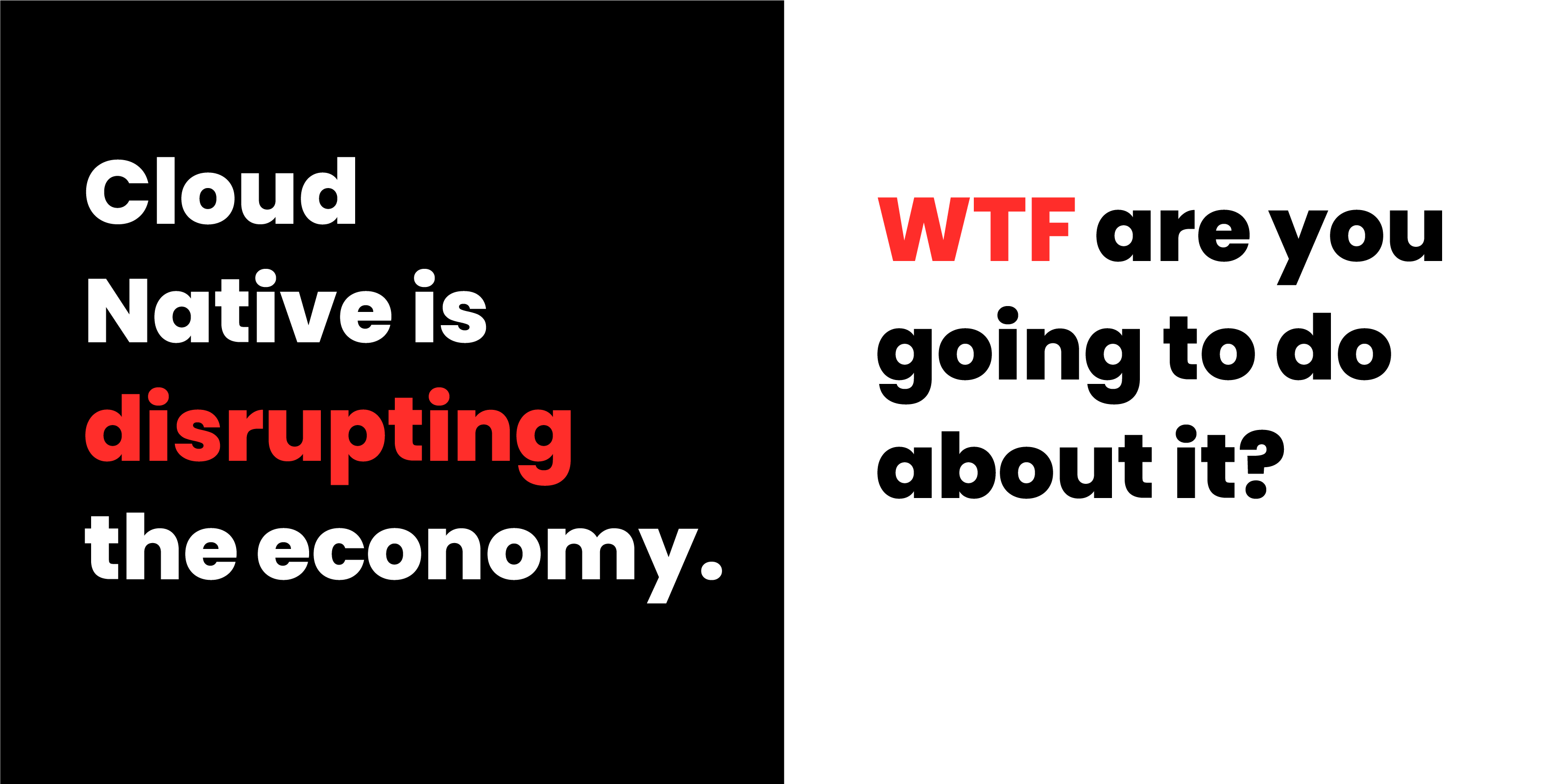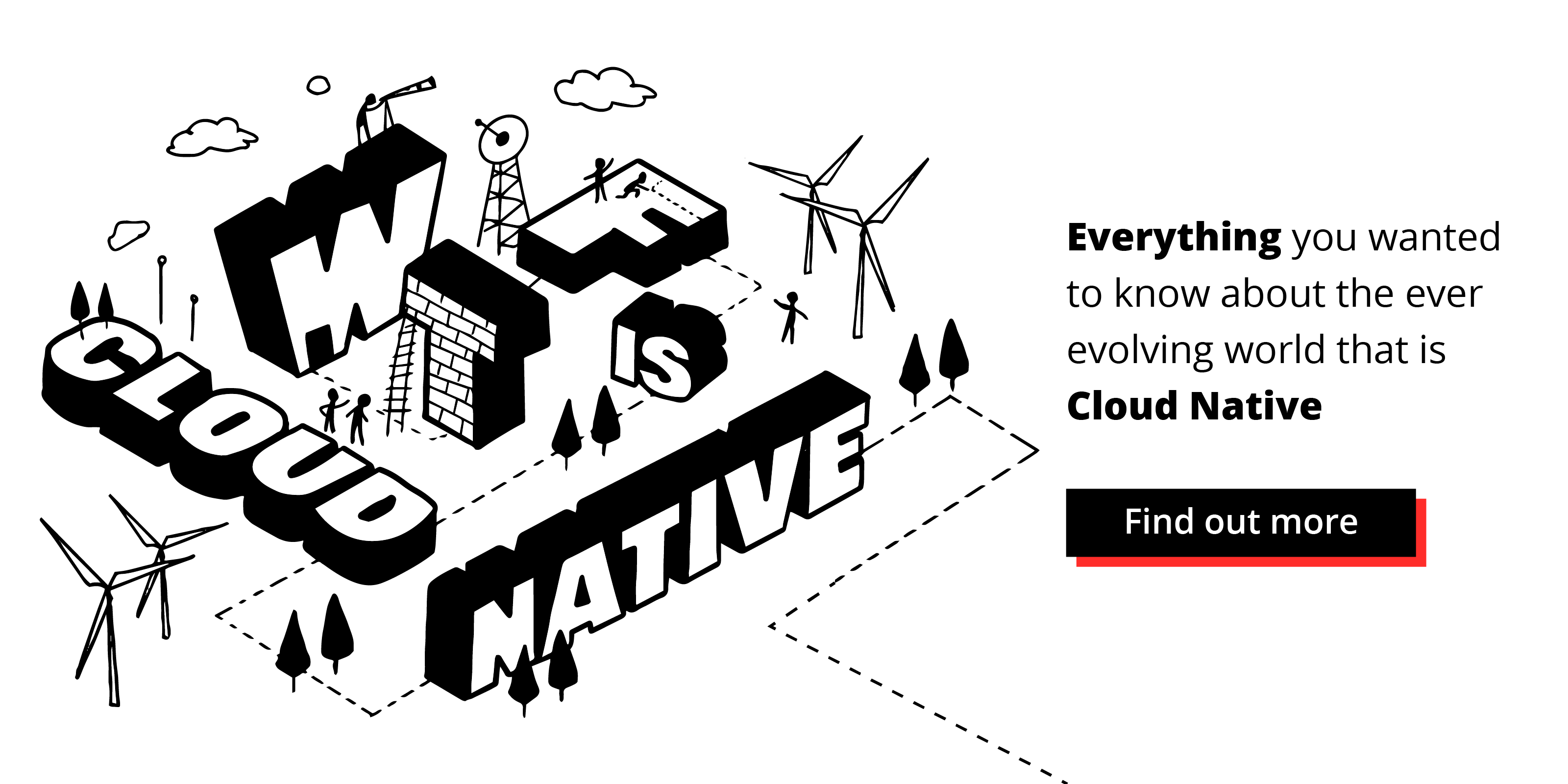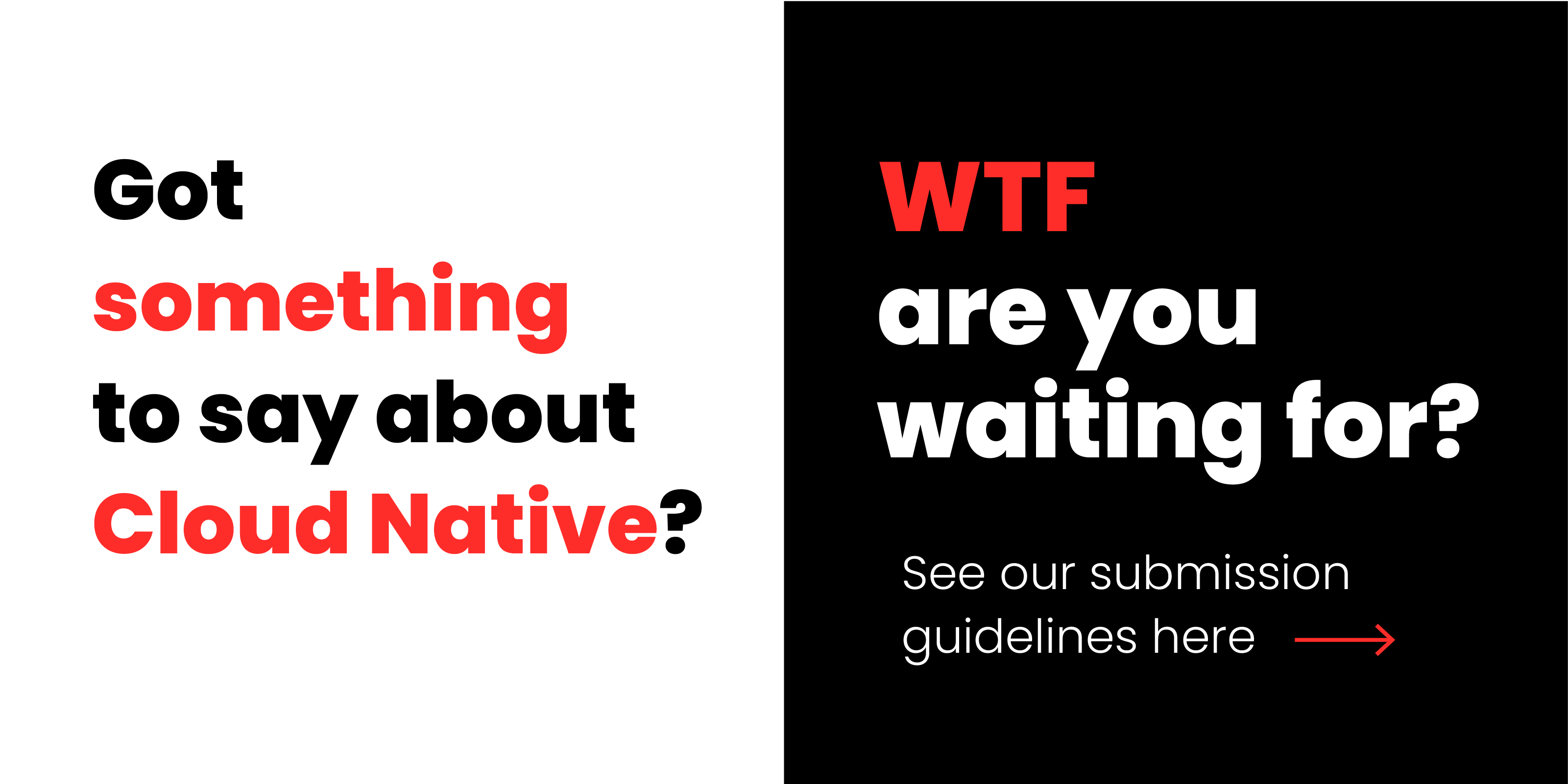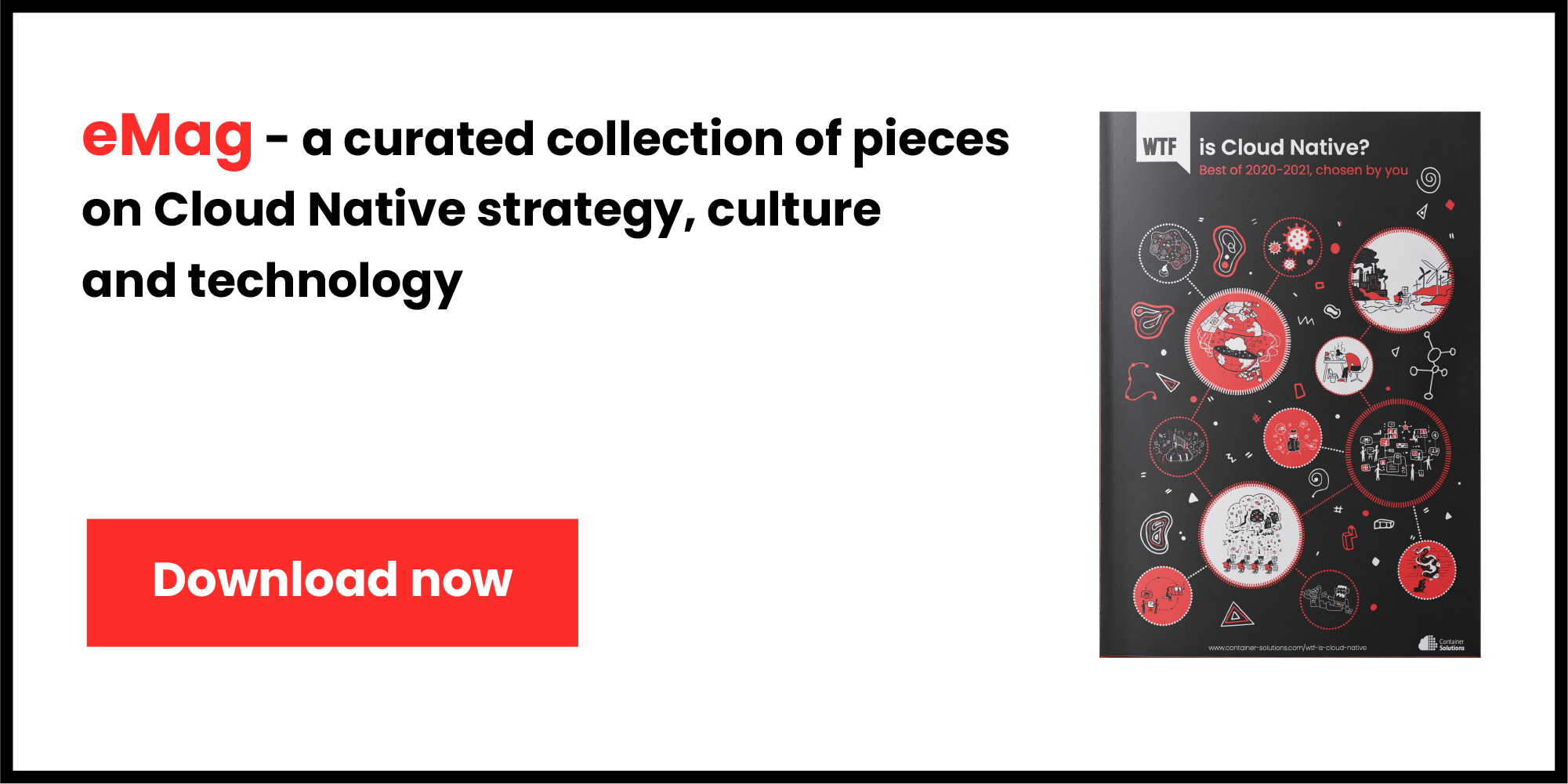We’re in a new, global recession caused by the impact of the COVID-19 pandemic. During recessions, shareholders place pressure on companies to learn to do ‘more with less’, often by supplementing their workforces with software or robots.
Since the Great Recession of 2008, the technology that we work with at Container Solutions, Cloud Native, has advanced tremendously. Public clouds—huge data centres—serve tens of thousands of applications to millions of users. Cloud Native tools and processes allow enormous consumer-facing businesses to operate with astonishingly few human beings at the helm.
The pressure to innovate, during the last three recessions, created ‘jobless recoveries’: productivity returned but the jobs did not. The recovery from the COVID-19 recession has the potential to be the most jobless ever.
As the CEO of a professional services firm that helps its customers to adopt Cloud Native, my job is to advance the technology that allows Amazon and Ocado to dominate the home shopping sector without employing huge numbers of people. As deliveries switch over to drones, robots, and driverless vans, they will employ even fewer.
So while my colleagues and I drive forward the astonishing capacity of Cloud Native, at the same time, I am obliged to ask: Do we know what we're doing? Are we aware that our work is leading to jobless recoveries and what this might mean for society?
Hard Times for the High Street
Cloud Native is an awesome technology. It lets us rapidly develop applications that can be securely used by millions or sometimes billions of users. It enabled Starling to build a bank in a year, the Financial Times to become an online publication, and Amazon to obliterate the High Street, leaving only Waterstones selling books and Richer Sounds selling hi-fi equipment.
In this year alone, from January to June, 11,120 shops in the U.K. closed. COVID-19 forced a lot of people online, where a bunch of Cloud Native retailers were ready to serve their needs. The U.K. High Street will never again be as we remember it.
What is happening on the High Street was predictable. During recessions, businesses are driven by shareholders to embrace technological change in order to bring down costs. This process, where economic pressure forces us to innovate, to do ‘more with less’, is central to capitalism. The economist John Maynard Keynes said at the end of this process we will find ‘technological unemployment’. He said,
a point may soon be reached, much sooner perhaps than we are all of us aware of, when these needs are satisfied in the sense that we prefer to devote our further energies to non-economic purposes.
What he meant by ‘non-economic purposes’ was leisure time: the ability to choose what to spend your time on when not at work. In fact, Keynes predicted we’d only work about 10 hours a week.
Is a Jobless Recovery Ahead?
Is 2020 the year that Keynes’ prediction comes to pass? Are we about to see widespread technological unemployment? Let’s consider what we know.
Firstly, this recession is the worst since the Great Depression and by far worse than the Great Recession of 2008. The accompanying pressure to cut costs is huge. I personally feel this in two places: At my own company, we have to manage our own costs and cash reserves, making sure we stay lean; at the same time, we are helping our customers to cut their own costs, by helping them to adapt Cloud Native.
Secondly, the technologies we have at our disposal are (obviously) the most advanced we have ever had. In the years since the last recession, we have seen advances in Cloud Native, artificial intelligence, robotics, green energy, and driverless cars. Taxi companies—usually Uber these days—have historically been ‘employers of last resort’. If you have fallen on hard times, you can at least drive a cab. However, if cabs drive themselves, then we lose this crucial safety net.
Thirdly, and this is the one nobody is talking about, companies have to become more resilient. The COVID-19 pandemic has shown us just how fragile many businesses are. To become more resilient, businesses must develop more flexible workforces, new processes for strategic reformulation, and of course, fault-tolerant and highly available computer systems, which is exactly what Cloud Native systems are.
These three factors have the potential to create the longest jobless recovery in history. The reason why the impact will be so great is that, until now, many companies have shied away from making the move over to Cloud Native—but the recession will finally force them to do so.
Cloud Native Transformation: Gains, but Also Pain
Thousands of companies have um’d and ah’d about starting a Cloud Native transformation for years. Most put it off because—dispute the fantastic gains, namely around an increased capacity to innovate—it’s a painful process.
It leads to a severe dislocation of organisational life as new skills have to be mastered, new roles created and hired for. It leads to grief, as people say goodbye to systems that have been built over decades. Finally, it leads to one of the most traumatic events a business ever faces, redundancies.
The truth is, most companies only make the shift to Cloud Native when an existential threat forces their hand. That threat arrived with COVID-19, when many companies were left with a choice: digitise or die.
Does Cloud Native really let you do so much more with so much less? The answer may surprise you. Let’s consider only three aspects and how things have changed recently.
- Operations. Operating applications in production, only a few years ago, would have been a job for hundreds of engineers. Nowadays, hundreds of applications can be managed by just a few engineers.
- Clouds. The public ‘clouds’ are nothing more than modern data centres. They are effective and efficient. A modern data centre, which serves thousands of applications to millions of users, employs only a couple of hundred workers.
- Tooling. We need fewer people because of advances in tooling. Kubernetes, a tool developed by Google to help run applications like GMail, is now open sourced and free to use. It has automated a lot of operations tasks that used to be manual.
In the last 10 years, the sands of IT infrastructure and application development have shifted dramatically. This makes it hard to do a like-to-like comparison. What we can say with certainty, however, is that we are now doing much more with much less. Products that are perceived as either cheap or free, such as Netflix, WhatsApp, Twitter, and Gmail, are served to billions of users.
To put this into perspective, in 1973, Kodak had 120,000 employees working in the business of creating and sharing photographs; when WhatsApp was bought by Facebook, it was valued at $19 billion but employed only 55 people.
The Bounty vs. the Spread
Does this technology-enabled economic dynamic matter? To help reveal the answer, let me talk to you about toffee.
I once found myself in a hotel in Singapore. Terribly jetlagged, I discovered a tray full of Needler’s Jersey toffees on one side of the room. These toffees were made in Hull, my hometown in East Yorkshire. (The factory is a housing estate now). My Aunty Margeret got a job at the factory as a teenager. My mum said, Margeret ate one sweet for every 10 sweets she packed. It cost her her two front teeth.
In the 1994-95 season, Hull City, ‘the Tigers’, had the most garish shirt I can remember (and we’ve had a lot of garish shirts), and the football club and its shirts were proudly sponsored by Needlers. The impact of the toffee factory was spread all over our town: sports teams and university buildings were sponsored and people’s salaries made their way to the grocer, the pub, the landlord, and the collection plates at church.
But here’s what’s different about the economic impact of a business that’s undergone a Cloud Native transformation, as opposed to an older company like Needler’s in its heyday: It does not create new jobs. Often, it eliminates them.
This lack of new jobs leads to what the economists Erik Brynjolfsson and Andrew McAfee, in their book, The Second Machine Age, call an increase in the bounty but a decrease in the spread. This means more profits are created as labour costs are driven down, but the profits are not shared with a large workforce, as the workforces for high-tech companies are relatively small.
So, the spread is decreased and the large bounty is shared by only a small number of people. This is the opposite of what happened with Needlers in Hull, where a modest bounty was spread widely.
The concept of the spread and the bounty predicts exactly what just happened this year. In May, Forbes reported that the ‘top five U.S. billionaires (Jeff Bezos, Bill Gates, Mark Zuckerberg, Warren Buffett, and Larry Ellison) saw their wealth grow by a total of $75.5 billion’ during the pandemic. Zuckerberg and Bezos, the heads of two of the most famous Cloud Native businesses, Facebook and Amazon, increased their combined fortunes by $60 billion. The bounty is massive. The spread is tiny.
More Productivity, Fewer Workers
We will continue to see larger bounties and smaller spreads as businesses that employ large numbers of staff are pushed to embrace the economies and efficiencies of Cloud Native. This exactly explains the current demand for Cloud Native: Most businesses rightly see it as a path to cost savings and innovation. This is why Cloud Native might be a contributing factor to the longest jobless recovery we’ve ever seen.
To understand that, let’s take a look at the last three recessions.
A jobless recovery occurs when productivity returns but the jobs do not. All three of the last recessions were followed by jobless recoveries. For instance, going by U.S. Labor Department figures, in the 1991 recession, it took 32 months for all the jobs to come back. In 2001, 46 months. After 2009, it took 76 months for the labour market to recover—just over six years.
In his book, The Zero Marginal Cost Society, Jeremy Rifkin writes that,
Between 2008 and 2012, while the Great Recession was bleeding workers, industry was piling on new software and innovation to boost productivity and keep profitable with smaller payrolls. The effect of these efforts is striking.
What were the effects? After the Great Recession, productivity in the U.S. was up by 2.2%—but this was achieved with 3.84 million fewer workers than before the downturn. According to the economist Mark J. Perry,
The Great Recession stimulated huge productivity and efficiency gains as competitors shed marginal workers and learned how to do ‘more with less (fewer workers)’.
Robert Hall and Marianna Kudlyak, in their article published in June on VoxEU.org, ‘What do recoveries from past U.S. recessions teach us about the recovery from the pandemic recession?’, argue that jobs do eventually come back. However in regards to this recession, Hall and Kudlyak wrote,
workers must undergo the same time-consuming process of searching for work, taking short-term jobs, and experiencing spells out of the labour market, that we have described in our work on the slow recovery of unemployment after the recessions from 1948 through 2009. The implications of this outcome are alarming: the U.S. unemployment rate is currently about 14%, say 9 percentage points above normal. It would take 11 years (9 divided by 0.85) to work off the pandemic’s bulge of unemployment as it currently stands.
Since that article was published, unemployment in the U.S. has fallen from 14% to just under 8% and is currently 7.4%. Nevertheless, it’s worth remembering that unemployment in the U.S. at the end of the last recession stood at 9.5% and it took six years for the jobs to return. We are also not at the end of this recession—and, in fact, are at the beginning of the second wave of the COVID-19 pandemic. Unemployment is likely to get worse before it gets better, this is especially true in places like the United Kingdom, where government support schemes are about to end.
These simple economic truths must finally make us sit up and take notice. Not just that; we must take serious decisions about the social implications of these fundamental shifts in the technology of work.
Is the Tipping Point Ahead?
The Cloud Native community—of which, alongside my colleagues, I am a proud member—is helping to create value for ordinary, everyday people. Our community builds applications like Netflix, which bring pleasure to millions of people at a sustainable price. Cloud Native also helps governments to deliver services much more effectively and at a much lower cost. Every pound saved in one department, at least theoretically, is a pound that can be used for schools or hospitals or simply passed on as lower taxes.
On the other hand, we in the tech industry are contributing to under- and unemployment, which are creating much longer ‘jobless recoveries’. If this cycle goes on for long enough, Keynes said, capitalism will eventually end, as there will be no more workers left to buy products and services, no matter how cheap they are.
As we get closer to that end, we can expect to see longer jobless recoveries, which is what we are seeing. At some point, a tipping point will occur and the jobs lost in the latest recession will simply never return.
Are we at that tipping point now?
If we look at the depth of the COVID-19 recession, the pressure on firms to automate, and the unavoidable fact that Cloud Native, like many other technologies, are maturing, then we have the perfect conditions for the fourth jobless recession in a row. I don’t think we are at the tipping point. I do think we are one jobless recovery closer. I also think that if we don’t intervene with policies for this century and from this century, it will be the longest jobless recovery we’ve ever experienced.
Planning for Our Shared Future
So let me ask again: does it matter? It does matter.
As I mentioned earlier, I am from Hull. For once, this is an important fact.
The first known reference to a windmill in northern Europe places it just beside Hull, on the Humber Estuary. Windmills, it turned out, were the great democratiser of power that allowed ordinary people to ‘thump’ their own wool, grind their own flour, and pump their own water. They led to an explosion of innovation and trade that started in East Yorkshire and spread across Europe.
This means, nearly a thousand years later, as the sun rises in the morning, all over the East Yorkshire farmlands shadows of long-abandoned windmills are cast. These abandoned buildings, some no more than mounds of stone, are remnants from a critical moment in the history of capitalism.
Within the inner city, however, a darker side of capitalism is on show. Hull is a remnant from the latest shifts of the economy. Factories and offices stand abandoned. Pubs are boarded up and Victorian mansions, which you couldn’t buy in London for less than £5 million, sit in partial ruin whilst others are repurposed as bedsits. Hull has high rates of teenage pregnancy, drug and alcohol addiction, and domestic violence. The schools in Hull are regularly the worst performing in the country. We die young. This is what the ‘destruction’ part of ‘creative destruction’ looks like.
The old way of thinking was always that, should workers be let go, there would always be, quite quickly, more profitable, alternative employment waiting for them. This old thinking didn’t hold in Hull and nor did it hold for the last three jobless recoveries. It also will not hold for the recovery from the COVID-19 recession.
This is because, since the Great Recession, 12 years have passed and the technological leaps we have made are profound. Take these advances, the economic pressure of this recession, and the fact that businesses just woke up to how fragile they are (and that they must now become resilient) and you have the perfect conditions for the longest jobless recovery in history.
We will not get through what comes next with the thinking and policies of recent years. The choices of governments, which the leaders in the Cloud Native community can help shape, will have long-lasting and dramatic effects. We all have to think very carefully about what we want next.
The future just arrived and it’s one of our own making. What are we going to do about it?
Suggested Reading
- Jeremy Rifkin, The Zero Marginal Cost Society (Griffin)
- Erik Brynjolfsson and Andrew McAfee, The Second Machine Age (WW Norton)
- Robert Hall and Marianna Kudlyak, ‘What do recoveries from past U.S. recessions teach us about the recovery from the pandemic recession?’ (VoxEU.org)





 Previous article
Previous article
